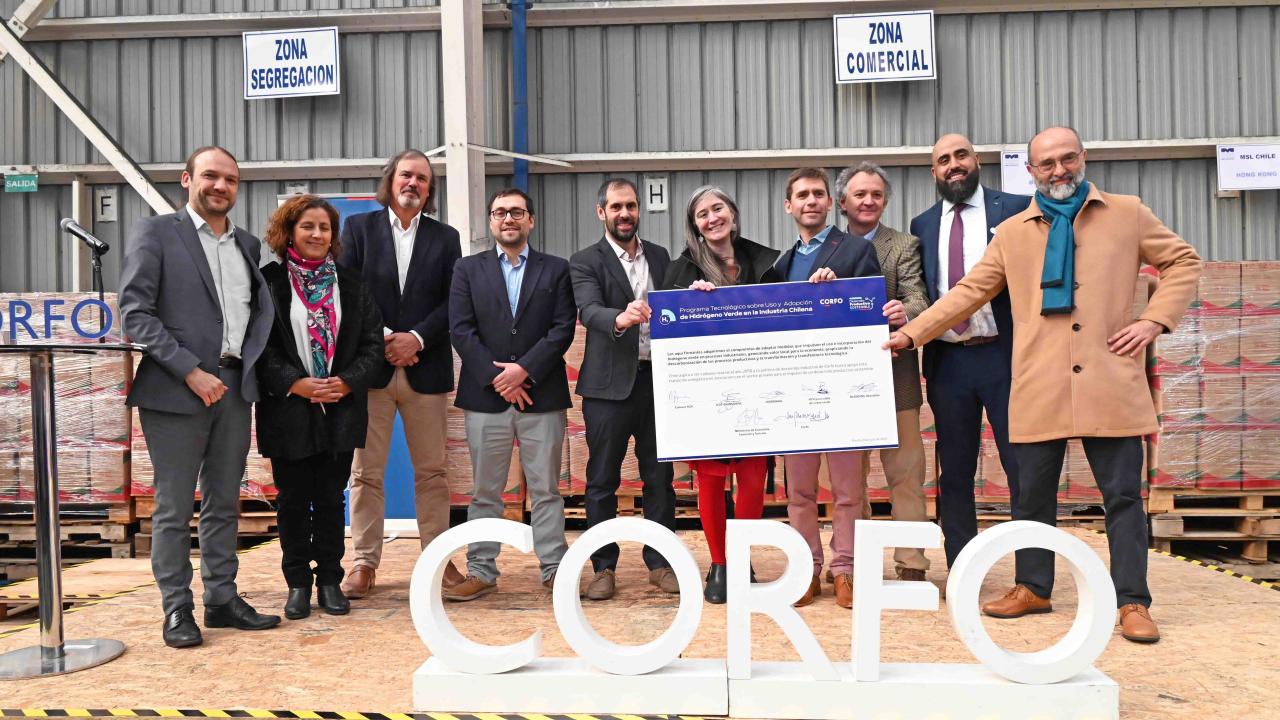
It is estimated that the implementation of projects within the framework of these calls could increase demand by up to a thousand tons per year, a figure that could increase to 45 thousand tons per year when the technologies developed are replicated.
This Wednesday, the Production Promotion Corporation (Corfo) of Chile announced the opening of two new calls that add to the efforts that the entity has been making to promote the sustainable development of the local green hydrogen industry, within the framework of the the country's international commitment to achieve decarbonization by 2050.
With this objective, the Minister of Economy, Development and Tourism, Nicolás Grau, and the Executive Vice President of Corfo, José Miguel Benavente, announced that until the beginning of September the competitions for the second version of the Technological Program of “Use and Adoption of Green Hydrogen in the Chilean Industry” as well as the first version of a technological program called “Manufacturing of enabling components for the hydrogen industry.”
Together, both calls will mean public subsidies of $13.5 billion (US$ 14.3 million) over 5 years, while private subsidies will contribute another $10.8 billion (US$ 11.5 million).
The initiatives seek, first of all, the development of various technologies that allow the conversion of production processes to new energy; and, secondly, promote the development of local manufacturing activity associated with the value chain of this new industry.
In fact, Corfo estimates that the development of the projects expected to be financed with the call for the “Use and Adoption of Green Hydrogen in Chilean Industry” could generate an increase of 1,000 tons per year in direct demand for hydrogen in the country. , which could reach up to 45 thousand tons once the technologies finish their piloting stage and are fully implemented.
The agency explained that these calls are in addition to other efforts that the Corporation is deploying to promote the development of the production and use of H2V in the country, among which is the call to present offers for the “Manufacturing and/or assembly of electrolyzers and their components” in Chile and the recent opening of a competition for the installation of a H2V Technological Innovation Center in Magallanes.
“We are talking about more than $35,000 million (US$37.2 million) between what was awarded in 2023 and what we are going to award in 2024, an important effort that we are making as a country that we hope will help us accelerate transit towards carbon-neutrality,” said Minister Grau.
Meanwhile, the Executive Vice President of Corfo, José Miguel Benavente, highlighted that the productive sector associated with hydrogen offers numerous activities and functional processes to achieve carbon neutrality that “generate opportunities in employment and economic growth not only for companies, but "which also for the well-being of people by allowing us to use cleaner energy."
GLOBAL MOMENTUM IS LACK
Although the Chilean government presented at least five concrete use cases during this launch – Walmart's experience using hydrogen-powered forklifts, the use of a mixture of LPG and NG with H2V made by Abastible, production of copper cables using hydrogen, fertilizers based on green hydrogen, hydrogen as fuel for last mile vehicles, among others - recently a global analysis on this clean fuel was not too optimistic.
Some of the uncertainties surrounding the future path of the energy transition include which niches will remain and which production methods will prevail for clean fuels. Hydrogen is the main candidate and the focus of several political discussions. Hydrogen can be used directly or is a precursor to clean fuels, such as synthetic natural gas or sustainable aviation fuels.
“While the technologies needed to produce hydrogen responsibly and without climate emissions largely exist and are proven, they carry high costs and lack competitiveness compared to their fossil fuel counterparts,” said Norbert Rücker, Head Economics and Next Generation Research. , in a report from Swiss bank Julius Baer earlier this month.
In Europe, hydrogen production credits have been auctioned to support the construction of infrastructure taking into account costs, since. Some say that hydrogen is the Swiss army knife of the energy transition, a tool that adapts to different applications, but where there is almost always a better alternative.
Some niches seem more plausible than others. For example, ammonia, a fuel derived from hydrogen, is likely to see greater adoption in the future. Ammonia logistics and trade already exist today, and could be a way for countries to export energy, given that the cost gap with fossil fuel-based ammonia is small and decreasing, and shipping companies seem willing to replace fuel oil.
“Given the trade and political uncertainties, we maintain our neutral view. Later this decade, we should have more clarity on the prospects and growth potential of clean fuels. The role of hydrogen within the energy transition remains uncertain. “We see a market that will only evolve by 2030,” stated Rücker.









